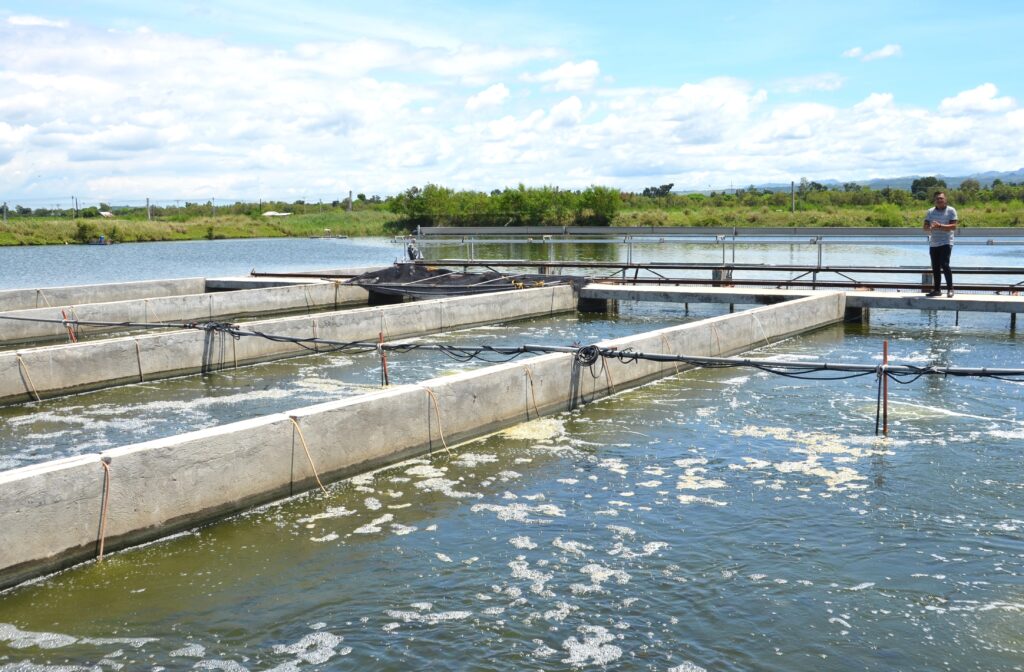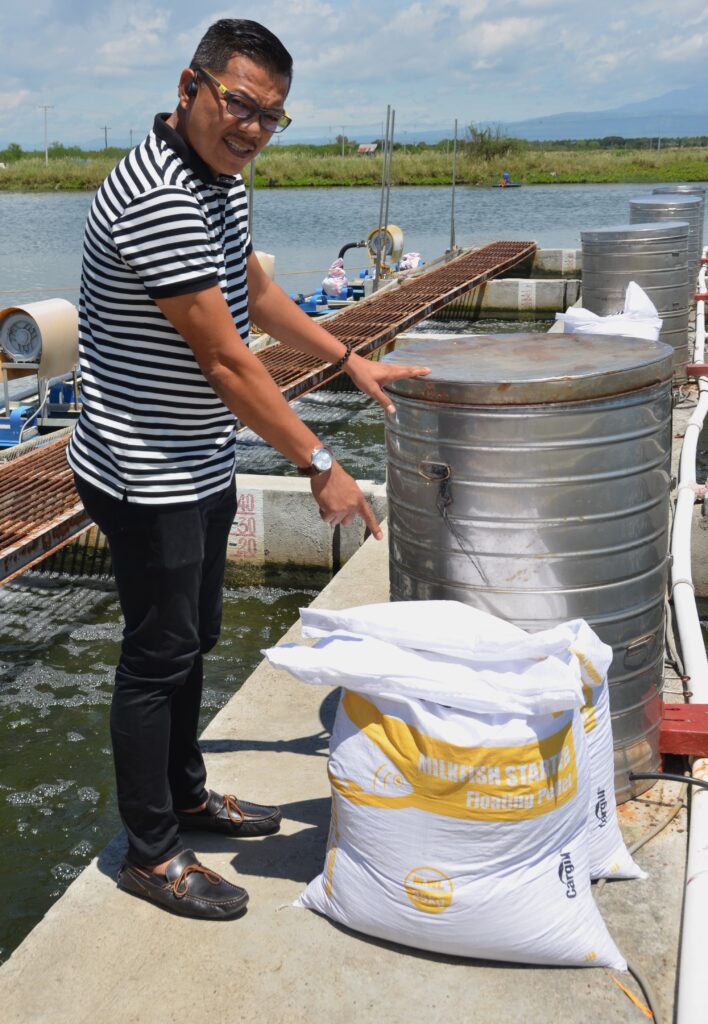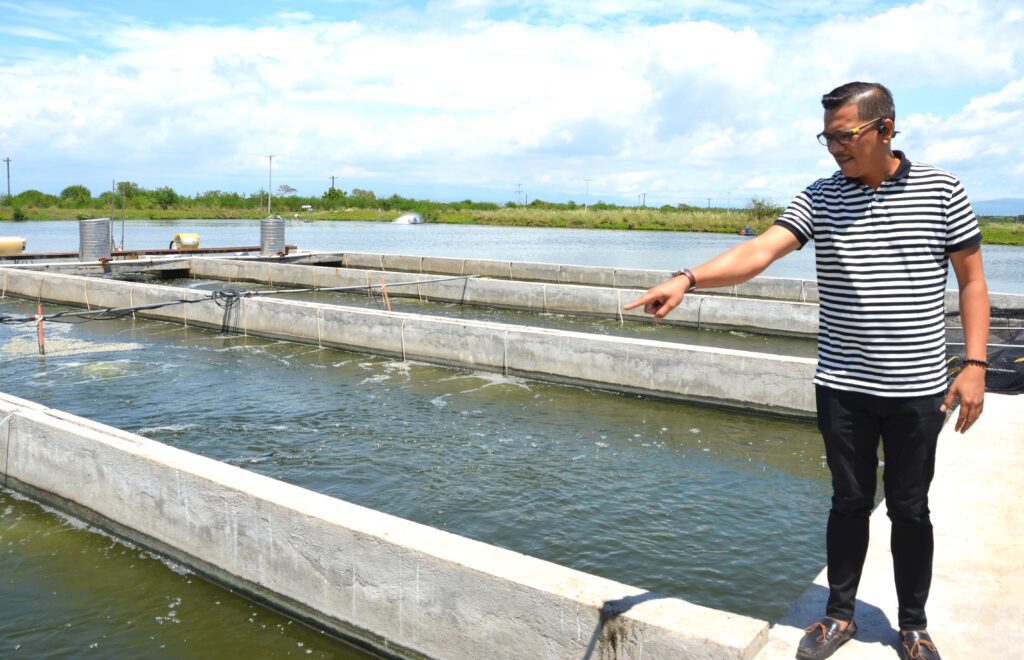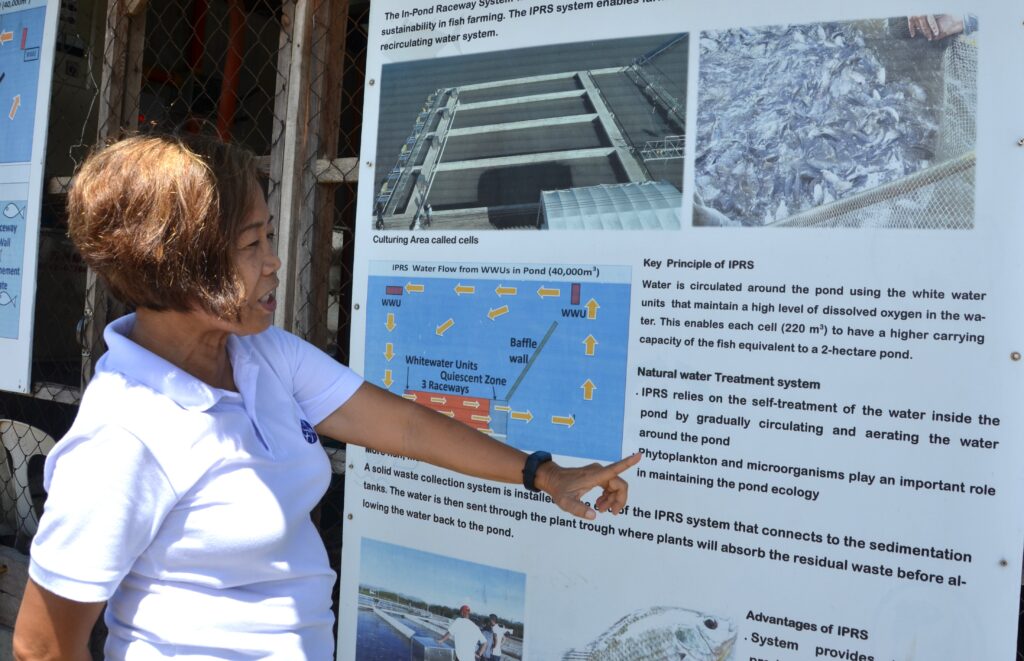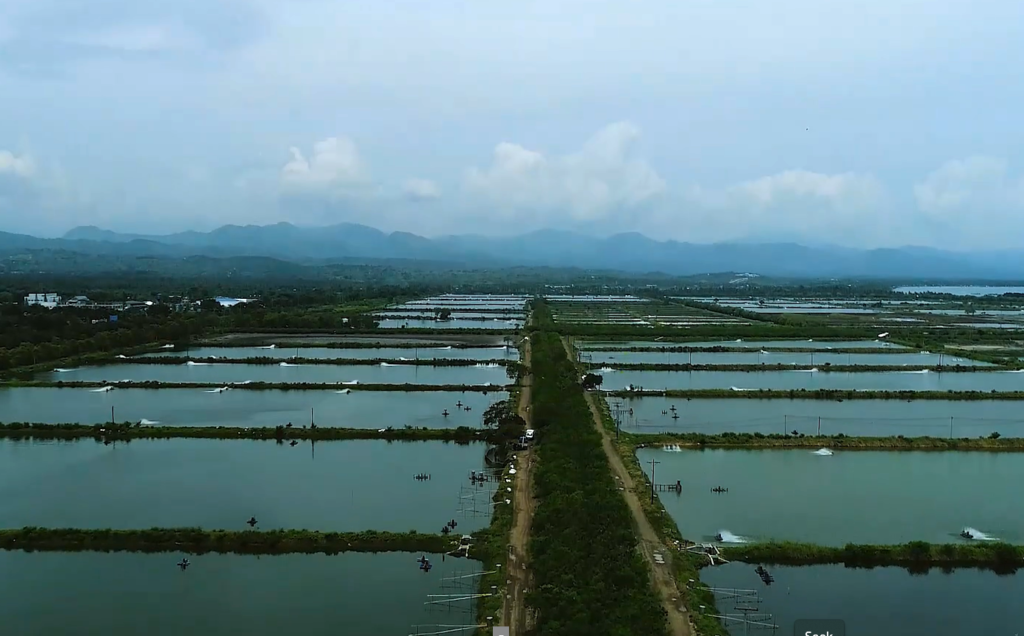Text and Photos by Henrylito D. Tacio
Fish are the “last wild meal” in the human diet. If the oceans are running low on many of humanity’s favorite fish, the solution would seem obvious: raise more seafood down on the fish farm, expanding the maritime version of agriculture known as aquaculture. After all, aquaculture has been a source of human protein for nearly 4,000 years, especially in Asia.
In recent years, aquaculture has become big business. Supermarkets in affluent countries are awash in scallops farmer-raised in China, mussels nurtured in New Brunswick and pen-reared cod from Newfoundland. One-quarter of the world’s shrimps are raised in ponds in 50 countries, with Thailand and Ecuador leading the harvest.
Fish farming is more advantageous than raising livestock. “For every kilogram of dry feed, we get one kilogram of fish meat,” said Dr. Uwe Lohmeyer of the Deutsche Gesselschaft fur Technische Zusammernarbeit (GTZ), a German Technical Cooperation. “This is a far more favorable rate than in the case of say, pigs: to produce the same quantity of pork, a farmer – given the same quality of inputs – has to provide three kilograms of feed.”
Not a new technology
Though a novelty in much of the world, aquaculture has been practiced through the ages. In the Philippines, it was the Malay emigrants who must have introduced the first fishponds long before the Chinese traders came to the country. “Our fishpond practices in most respects are similar to those of the Indonesians rather than those of Chinese,” said a Filipino marine expert.
Fishes are a major source of protein for the Filipino diet. “Fish and fishery products constitute 11.68% of each person’s total food intake which is equivalent to 93.9 grams per day,” said Norberto O. Chingcuanco, vice president of Feedmix Specialist Inc. “Each Filipino consumes an average of 34.27 kilos of fish and fish products per year.”
According to the Philippine Statistics Authority, aquaculture contributed 2.246 million metric tons to total fishery production in 2022. In the first quarter of this year, it accounted for 55% (545,640 metric tons) out of the 991,140 metric tons total fishery production.
Tilapia is one of the most popular fish raised in ponds. It is now the second most preferred fish by Filipinos – after bangus. It’s no wonder why more and more Filipinos are now raising tilapia in their ponds.
In-pond raceway system
There is now a better way of raising tilapia than the traditional method. It is called In-Pond Raceway System (IPRS), which the Alsons Aquaculture Corporation (AAC) is employing in one of its ponds in Maribulan in Alabel, Sarangani. It is the first of its kind in the Philippines.
The IPRS technology was developed in the late 1990s and early 2000s by Auburn University (Alabama) and Clemson University (South Carolina) but it was only in recent years that it was evaluated and adopted in commercial settings. It is now implemented in China, Vietnam, Mexico, Pakistan, India, Egypt and Bangladesh.
In the traditional method of fish farming, several natural resource constraints like water and energy have been identified. Not to mention some environmental issues that go with it. All these restrictions limit the aquaculture industry development.
In a way, these issues and concerns are being addressed by IPRS. Insiders say aquaculture producers can increase their fish production while significantly reducing environmental impact and optimizing operating cost.
More productive than traditional method
In IPRS, the fish are concentrated in “raceways” within a pond and provided with constant water circulation. In the middle of the pond, partitions are installed to ensure the circulation of the water. The system is “an innovative combination of existing tools and aquaculture principles for more efficient and sustainable fish production.”
“IPRS is three times more productive than a pond of the same size without IPRS,” pointed out Charles Hall, director of the animal and aquaculture nutrition meal of the U.S. Soybean Export Council (USSEC).
The USSEC prioritizes IPRS technology to enable effective, efficient, and sustainable aquaculture production. It believes fish convert soybean meal into muscle protein more efficiently than other animals, increasing the importance of economically viable aquaculture production.
The strategy is to concentrate fed fish in cells – or what they call as “raceways” – within a pond and provide them with continuous water circulation to maintain optimum water quality and to improve feed management. Water that comes from outside the pond is aerated to increase dissolved oxygen (DO) and initiate water flow in the trough.
DO – a measure of how much oxygen is dissolved in the water – is the amount of oxygen available to tilapia.
The tilapias are fed automatically by a machine. The rations, however, are divided accordingly to feed throughout the day.
It was the USSEC which introduced IPRS to AAC. “Our technical specifications are the gold standard for producers who intend to incorporate IPRS on their farms,” Hall explained. “Our international aquaculture technical experts also collaborate and serve customers who choose this technology.”
Construction of the pond in Alabel started in 2020. The pond has 4 cells and each cell measures about 220 cubic meters. The four cells – also called trough – are actually inside the 2-hectare pond area with two-meter water depth.
It took 10 months to build the system before it became operational. “The IPRS system enables us to stock higher densities of fish in a recirculating water system,” explains Israel M. Mosquera, operations manager of the ACC Growout Operations.
How IPRS works
“The water is circulated around the pond all the time by a water impeller (referring to white water unit) that increases the oxygen content in the water and creates a stream to allow the water to circulate throughout the system,” Mosquera says. “This makes the system able to culture the fish with high density.”
Phytoplankton and microorganisms play an important role in maintaining the pond’s ecology.
About 10.5 million gallons of water is being used in the pond. The pond can accommodate 380,000 pieces of tilapia fingerlings. “It takes about five months before we harvest the tilapia,” he says.
About 100 to 120 metric tons are harvested every cropping season. The body weight of those harvested weighs from 350 grams to 500 grams. These are sold in the local market in nearby provinces and some parts of Mindanao.
Unlike the traditional method of raising tilapia in ponds, IPRS can be considered an environment-friendly system. Experts believe it has the potential of reducing solid waste loading in the pond by concentrating and removing it from the downstream end of raceway units.
“In our technology, we have a solid waste collection system installed at the end of the cell that sucks out leftovers and waste. It connects to the sedimentation tanks to allow the water to clear up. The water is then directed to the plant trough. Those plants absorb the residual waste. The clean water is then returned to the pond and recirculated to the cells again.”
Advantages
When asked about the advantages of IPRS aside from those mentioned earlier, Mosquera enumerates the following: The system provides very high productivity. It uses less manpower. It allows year-round culture of fish. It is a future technology that increases productivity with minimal impact to the environment.
“IPRS has a high investment cost,” Mosquera admits. “But if you follow and understand how the system works, then its returns will be positive. We believe also that through this technology, we can produce more with less.” – ###
